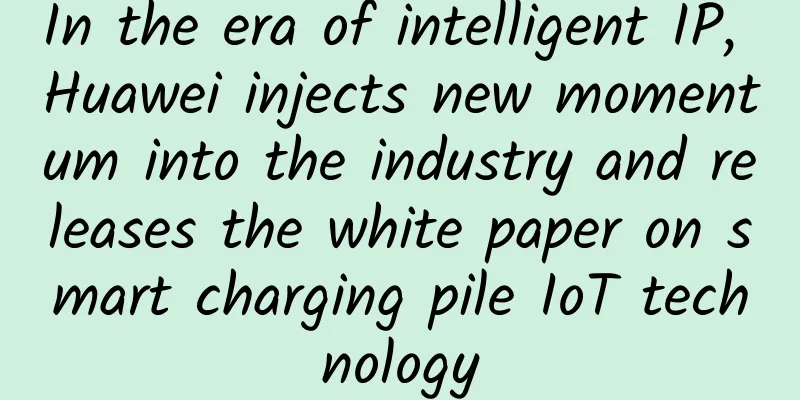Promoting the integrated development of 5G and industrial Internet

|
As the application scenarios of 5G Industrial Internet expand rapidly, policy support continues to increase, and weaknesses are gradually strengthened, 5G and Industrial Internet will achieve a wider range, deeper degree, and higher level of integrated development in the future.
"The integration of 5G and the industrial Internet will accelerate the construction of a digital China and a smart society, speed up China's new industrialization process, inject new impetus into China's economic development, and create new development opportunities for the world economy shrouded in the shadow of the epidemic." On November 20, 2020, General Secretary Xi Jinping sent a congratulatory letter to the 2020 China 5G Industrial Internet Conference, which fully demonstrated the Party Central Committee's high attention to the development of the 5G industrial Internet industry. Machines replace the naked eye in inspecting cloth, with a defect detection rate of up to 99%, and can operate 24 hours a day. Sitting in the remote cockpit, one can control an excavator thousands of kilometers away in real time with almost no delay in action. Robotic arms, logistics vehicles, conveyor belts and other factory production units automatically cooperate to achieve unmanned material collection, assembly, and testing... These scenes vividly demonstrate the power and charm of the 5G Industrial Internet. 5G and Industrial Internet are two advanced technologies that complement each other. On the one hand, compared with 3G and 4G, 5G has the technical advantages of high speed, low latency and wide connection, which can better meet the high requirements of Industrial Internet for transmitting massive data and fast and accurate control. On the other hand, Industrial Internet can create a large number of application scenarios for 5G, thereby promoting the faster development of 5G technology. In the more than one year since 5G was put into commercial use in my country, a series of 5G industrial Internet application results have emerged, such as machine vision inspection, precise remote control, and on-site assisted assembly, which have effectively promoted more accurate, safe, intelligent, and efficient production and manufacturing. Looking to the future, with the accelerated expansion of application scenarios, the continuous increase in policy support, and the gradual strengthening of shortcomings and weaknesses, 5G and the industrial Internet will achieve a wider range, deeper degree, and higher level of integrated development. We need to improve the technical level. At present, the level of key products such as 5G industrial terminals, chips, and modules in my country needs to be improved. Relevant enterprises should increase their efforts in scientific research and industrialization to make up for the supply gap. In terms of technical application, the 5G industrial Internet should move from peripheral production links such as video surveillance, patrol inspection and security to key manufacturing links such as product design simulation and production control, and strive to reach a new level. We need to strengthen application promotion. According to statistics, the proportion of digital transformation of Chinese enterprises is only 25%, and there is huge room for digital transformation of small and medium-sized enterprises. However, for many small and medium-sized enterprises, the initial investment in upgrading and transformation is large, and the transformation needs are relatively fragmented and diversified. It is necessary for relevant departments to strengthen guidance. On the one hand, they should explore application scenarios and provide consulting services to enable enterprises to actively embrace new technologies. On the other hand, they should build common technology platforms and create technology transformation templates to reduce the R&D investment costs of small and medium-sized enterprises. We should also focus on cultivating compound talents. 5G Industrial Internet is not a simple technology superposition, but requires compound talents across fields and disciplines. In reality, some talents in the communications field are not familiar with production and manufacturing, and some talents in the industrial field are relatively unfamiliar with communications technology. To this end, we should support enterprises to build compound talent training bases, promote relevant colleges and universities to carry out professional course training, strengthen the integration of industry and education, and provide stronger talent support for the long-term development of 5G Industrial Internet. Fortunately, relevant policy support is being strengthened to promote the integrated development of 5G and the Industrial Internet. The Ministry of Industry and Information Technology recently made it clear that by 2022, five industrial public service platforms will be built, covering 10 key industries and forming at least 20 typical industrial application scenarios. We expect that, with multiple measures, the integrated development of 5G and the Industrial Internet will gradually release a multiplier effect and help steadily improve the modernization level of the industrial chain. |
<<: Outlook for domestic 5G development in 2021 (I): Current status
Recommend
What is the appropriate number of Goroutines? Will it affect GC and scheduling?
[[387141]] This article is reprinted from the WeC...
Academician Wu Hequan: 5.5G does not require full network coverage, and recommends joint construction and sharing
IT Home reported on December 7 that the 2023 Worl...
The world's first non-cellular 5G standard has been released, with a higher connection node density than NB-IoT and LTE-M!
Recently, the DECT-2020 NR standard launched by t...
Let’s talk about 5G dynamic spectrum sharing?
What is 4G/5G dynamic spectrum sharing? Why is 4G...
If I have an unlimited data plan, should I cancel my home wired broadband?
In fact, if it is a truly unlimited data package,...
It may take another five to ten years for IPv6 to completely replace IPv4
[[329716]] On June 6, 2012, World IPv6 Launch, ma...
Huang Li of iSoftStone: Everything is connected in the 5G era. Let’s discuss the opportunities and challenges of enterprise digital transformation!
[51CTO.com original article] On September 18, the...
Introduction to TCP/IP Network Model
TCP/IP Network Model The TCP/IP model is the foun...
How to choose a managed data center service provider?
When an enterprise chooses a managed data center ...
China Mobile and industry partners jointly released the "Indoor Positioning White Paper"
On the morning of June 19, China Mobile, together...
KhanWebHost: $1/month KVM-2GB/10GB SSD/1TB/Dallas Data Center
Need to practice VPS hosting? You can take a look...
Wangsu Technology launches one-stop edge intelligence solution to lower AIGC application threshold
The new generation of intelligent technologies re...
New home routers must support IPv6, the Ministry of Industry and Information Technology has issued a document
According to the website of the Ministry of Indus...
Top 10 Web Trends: How to Stay Ahead in 2021
[[422976]] 【51CTO.com Quick Translation】 Due to t...
An article to introduce you to network protocols
Author | Cai Zhuliang 1. Directory Network Protoc...





![[Closed] Arkecx 40% off, Hong Kong/Taiwan/Japan/Korea/USA etc. starting from $72/year](/upload/images/67cabfe4197bd.webp)



